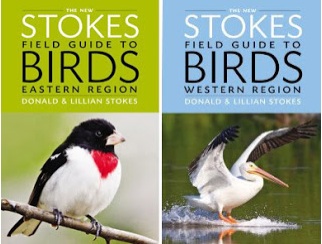 The Peterson Reference Guide to Owls by Scott Weidensaul is my first owl-specific guide and my first volume in their “reference guide” series, and what a wonderful introduction to both.
The Peterson Reference Guide to Owls by Scott Weidensaul is my first owl-specific guide and my first volume in their “reference guide” series, and what a wonderful introduction to both.
The book covers all 39 species of owls found in North America, Mexico, and the Caribbean. This is a very comprehensive, authoritative, and beautifully illustrated book which has everything you need to know about owls. Because it’s hardcover, it would also be a great coffee-table book.
Scott Weidensaul is a co-founder of Project Snowstorm, the research project that bands and tracks the movements of owls that appeared in the recent irruptive years; he is a co-director of Project Owlnet, a project with almost 125 banding and research stations across North America studying owl migration; and for nearly 20 years he has directed major studies on Northern Saw-Whet Owls.
The first part of the guide is the “How to use this book” section which covers a longevity, alpha codes, how to read the range maps, the topography, and explanations for such terms as reversed sexual dimorphism (where “females may be 20 or 30 percent larger than males”).
The next and largest section is the Species Accounts. The accounts range in length from three to 17 pages, representing the knowledge and research available on that species.
Each Species Account includes both English and scientific names, and the banding (alpha) code. Measurements, longevity, and a general description of the species follow. There are more detailed sections on Systematics, Taxonomy & Etymology, Distribution, Description & Identification, Vocalizations, Habitat & Niche, Nesting & Breeding, Behavior, and Status. At the end of each species accounts, there are Notes and Bibliography for further reading and research.
Each account contains a up-to-date range map and there are also subspecies distribution maps for Spotted Owls, Great Horned Owls, and Eastern and Western Screech-Owls.
One of the best parts of the book is the photos — there are 340 color photos included in the guide. I have an awful time getting photos of owls, so I take my hat off to the many photographers who spent time capturing the behaviour of theses secretive and hard to photograph birds. The easier owl species to find are represented with lots of great photos while lesser-know owls such as the Tamaulipas Pygmy-Owl have only one photo.
As owls are generally heard more than seen, much emphasis has been put on the vocal descriptions which are very detailed and descriptive. However, I find the best way to learn the calls is to actually listen to recordings. The author and publishers have put together a list for anyone interested in audio with 86 owl vocalizations which you can download for free from the Cornell’s Macaulay Library of the Cornell Lab of Ornithology — a wonderful bonus!
The Acknowledgments section includes a list of all the researchers, photographers, and even citizen scientists who helped with the book. Next is the Glossary where you can find all the owl terms mentioned in the book.
There are five pages of General Bibliography listing published papers, ornithological articles, and citations; these are primarily paper versions but there are some links to online sources too. The index includes species and subspecies names, both English and scientific. Pages for photographs, maps, and captions can be found in a bold font.
Even though much of the information is technical, Mr. Weidensaul’s style is very engaging and easy to read. One of my favourite sentences is from the Northern Pygmy-Owl: “Northern Pygmy-Owls rather famously lack a sense of proportion when it come to picking their prey.” And the back of the book is as helpful and comprehensive as the front.
For anyone interested in owls and their ecology and behaviour, the Peterson Reference Guide to Owls of North America and the Caribbean is a must-have. It’s incredibly well-written and well-designed, with informative text, and the photos bring each species to life. This book deserves a special place on the shelf or coffee table. This is a really wonderful book, and I’m hoping it will help me change my bad luck with owls.
I’d like to thank my good friend Ray of Ray Brown’s Talkin’ Birds for sending me a copy of this guide.














